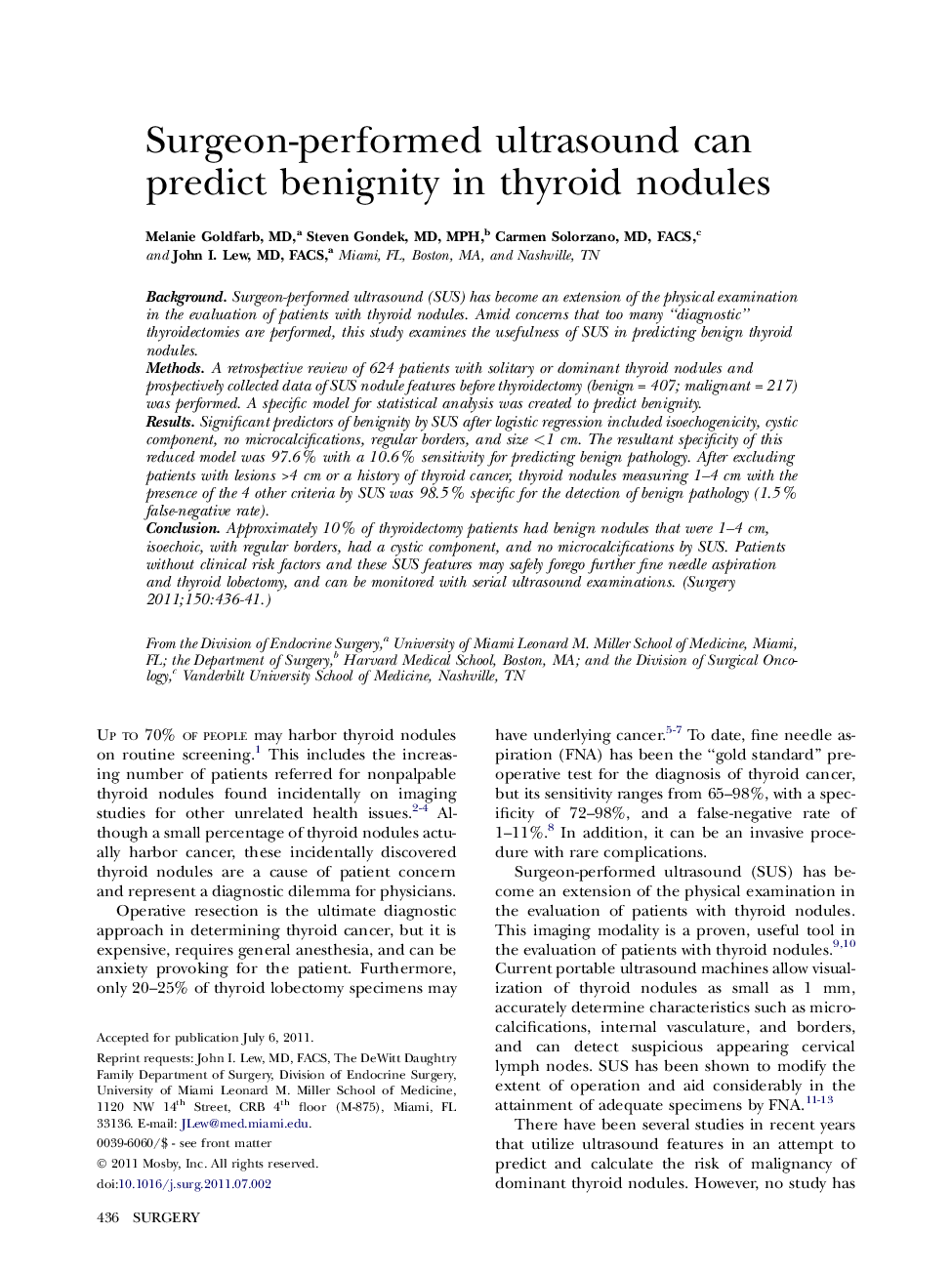| Article ID | Journal | Published Year | Pages | File Type |
|---|---|---|---|---|
| 4308487 | Surgery | 2011 | 6 Pages |
BackgroundSurgeon-performed ultrasound (SUS) has become an extension of the physical examination in the evaluation of patients with thyroid nodules. Amid concerns that too many “diagnostic” thyroidectomies are performed, this study examines the usefulness of SUS in predicting benign thyroid nodules.MethodsA retrospective review of 624 patients with solitary or dominant thyroid nodules and prospectively collected data of SUS nodule features before thyroidectomy (benign = 407; malignant = 217) was performed. A specific model for statistical analysis was created to predict benignity.ResultsSignificant predictors of benignity by SUS after logistic regression included isoechogenicity, cystic component, no microcalcifications, regular borders, and size <1 cm. The resultant specificity of this reduced model was 97.6% with a 10.6% sensitivity for predicting benign pathology. After excluding patients with lesions >4 cm or a history of thyroid cancer, thyroid nodules measuring 1–4 cm with the presence of the 4 other criteria by SUS was 98.5% specific for the detection of benign pathology (1.5% false-negative rate).ConclusionApproximately 10% of thyroidectomy patients had benign nodules that were 1–4 cm, isoechoic, with regular borders, had a cystic component, and no microcalcifications by SUS. Patients without clinical risk factors and these SUS features may safely forego further fine needle aspiration and thyroid lobectomy, and can be monitored with serial ultrasound examinations.
